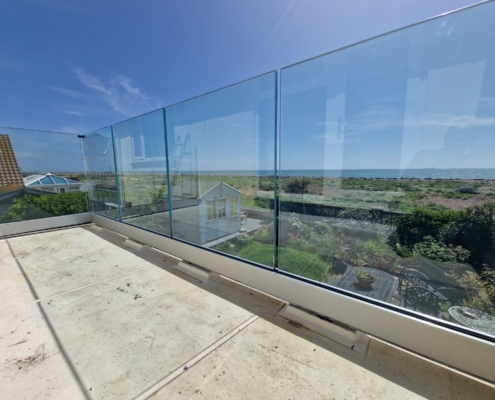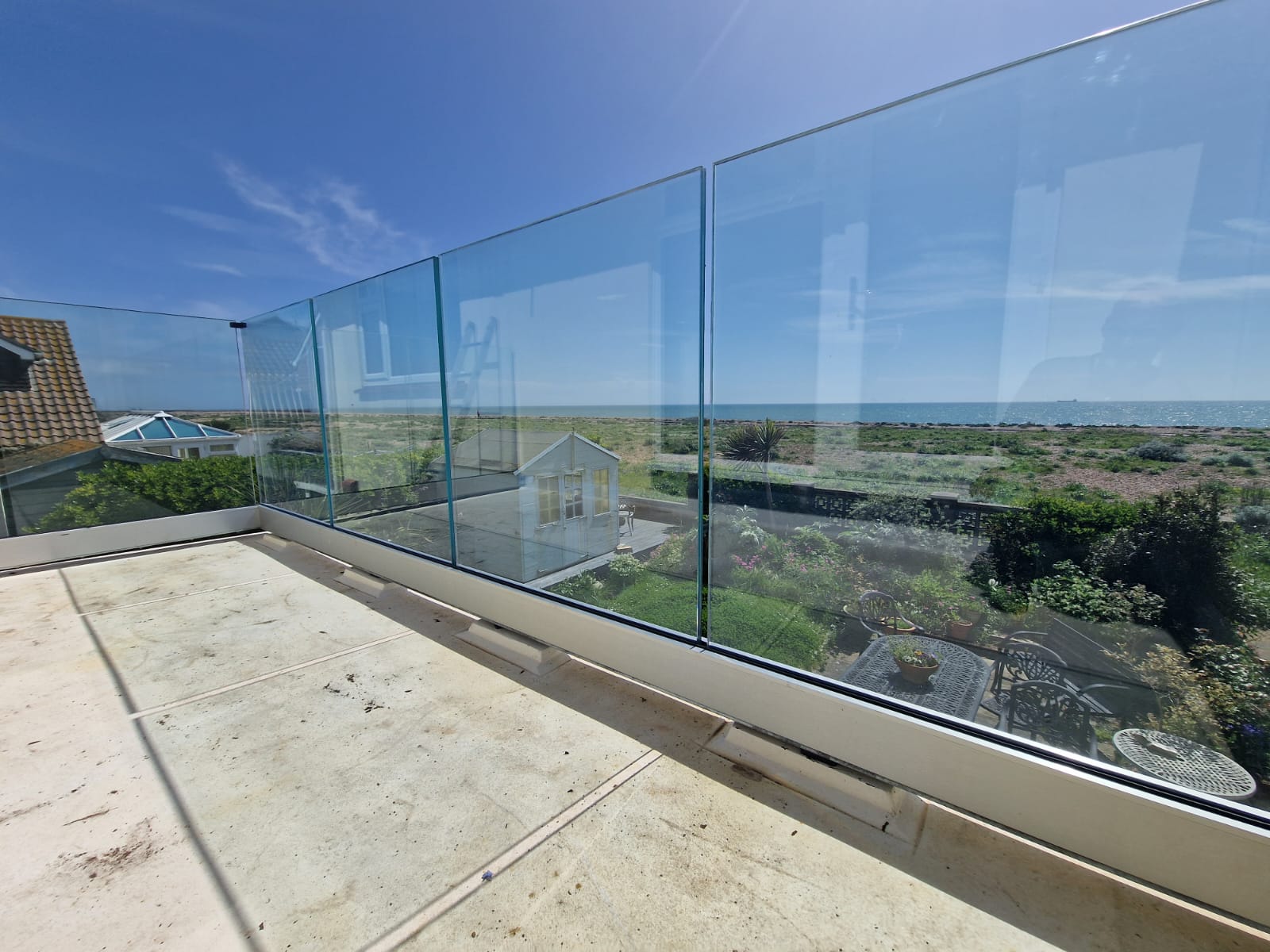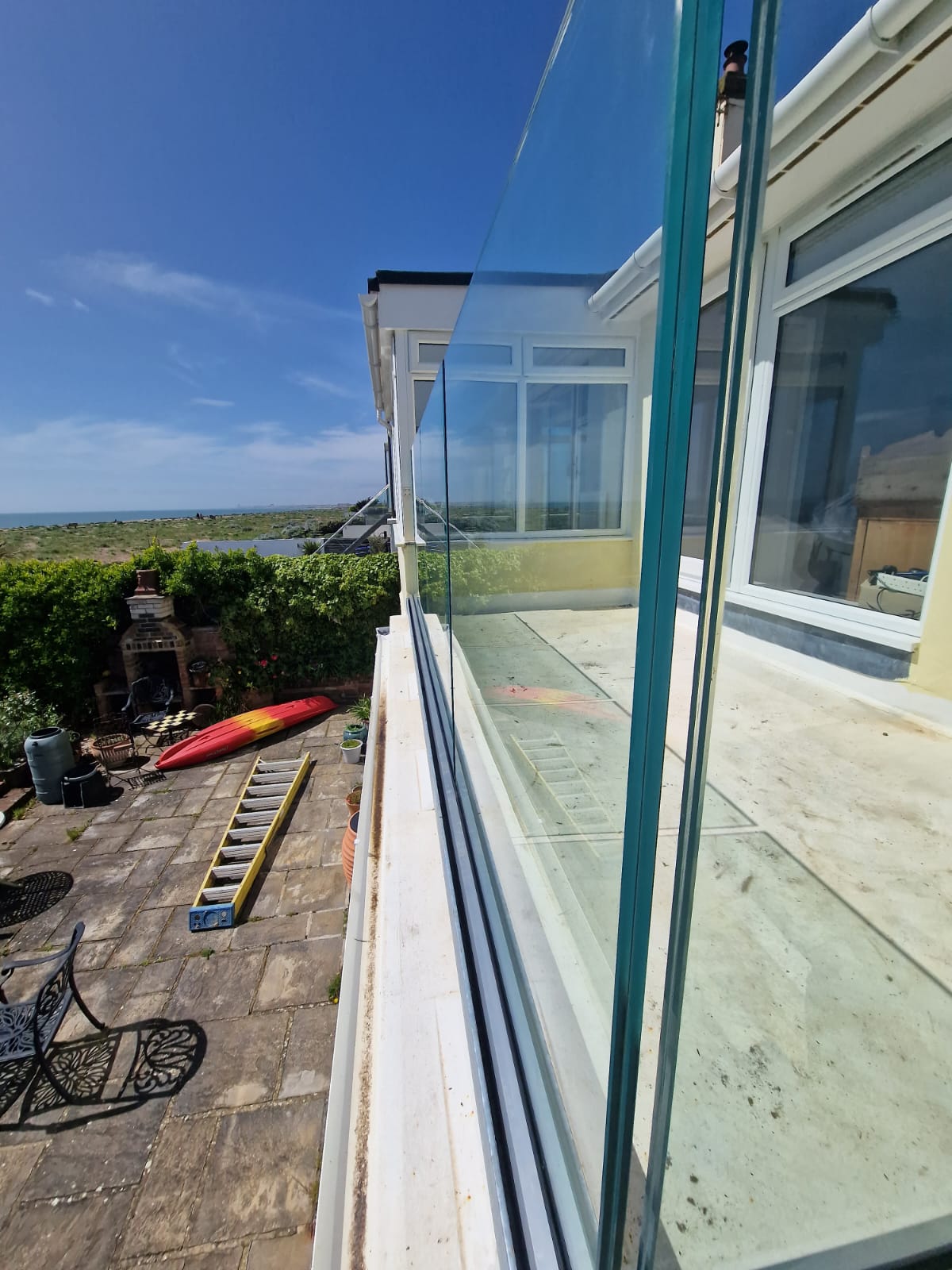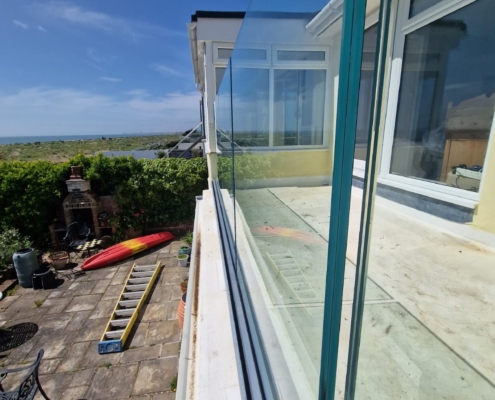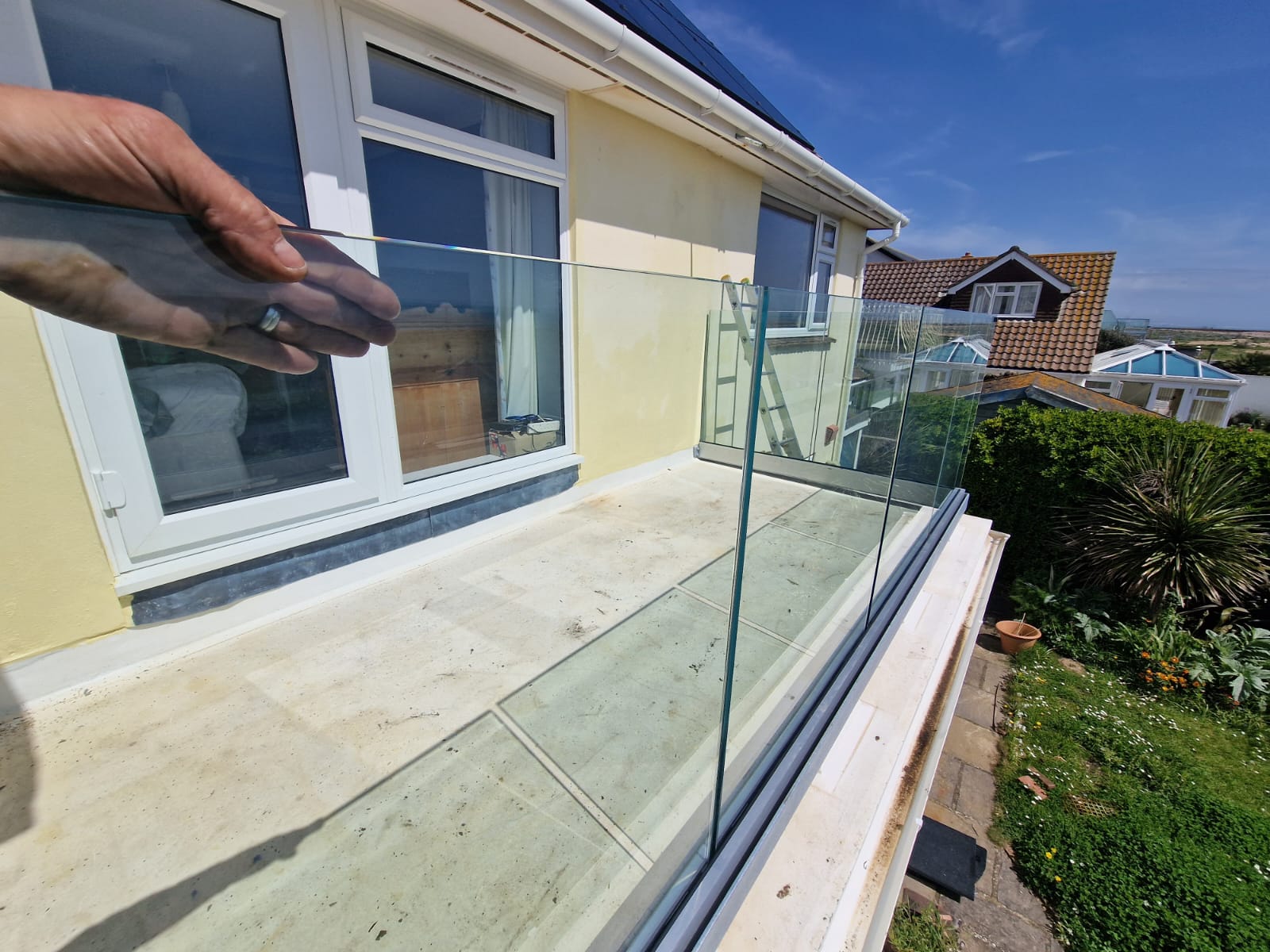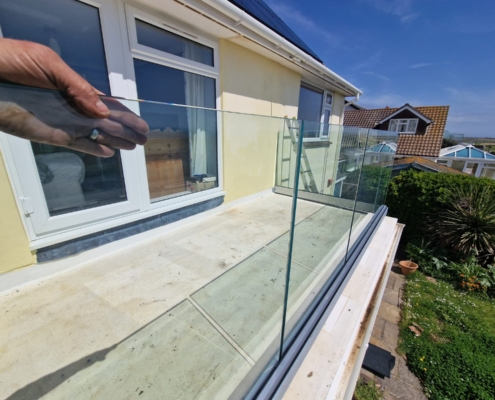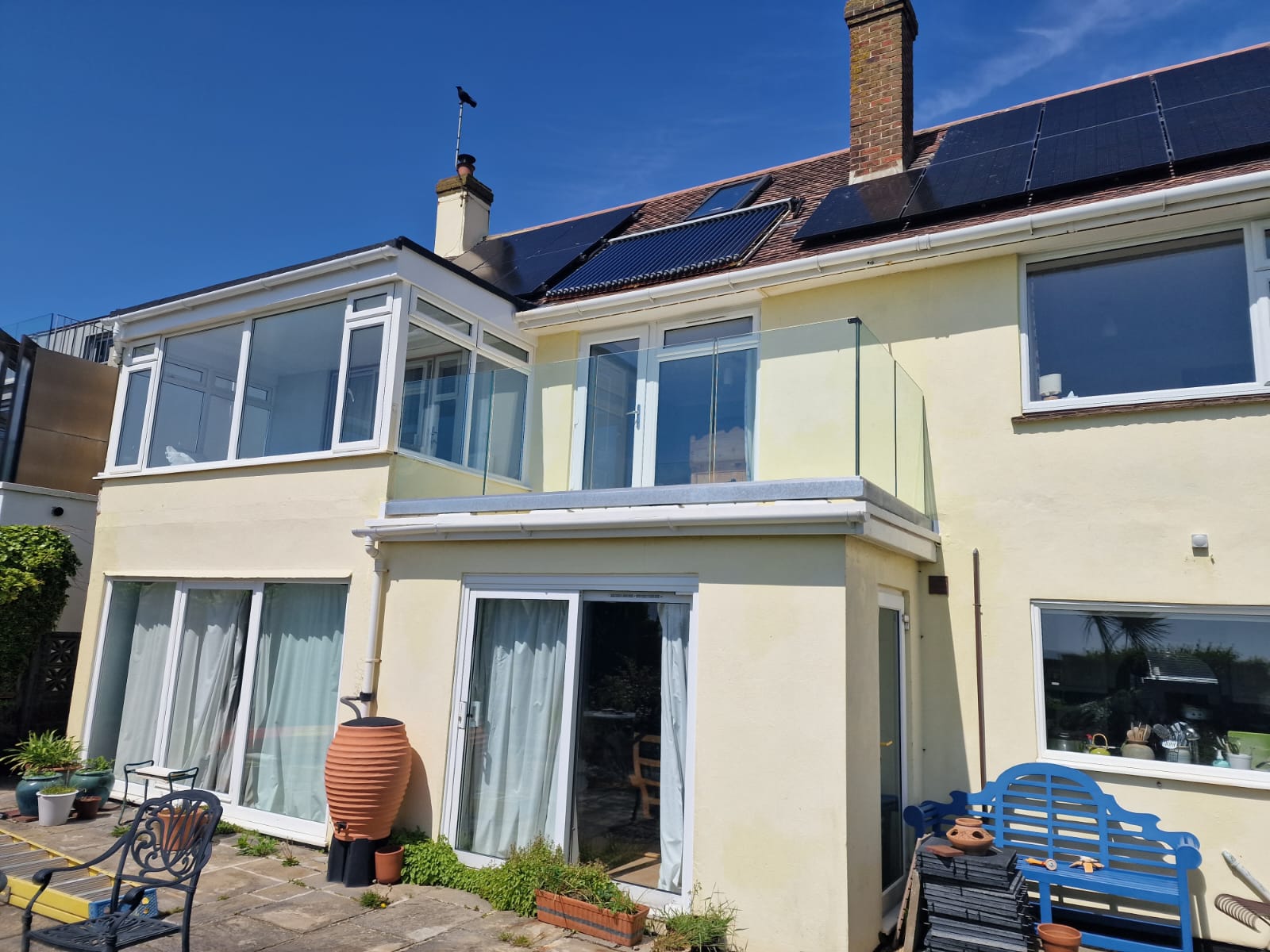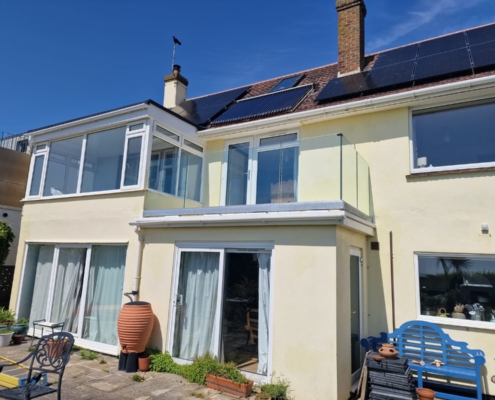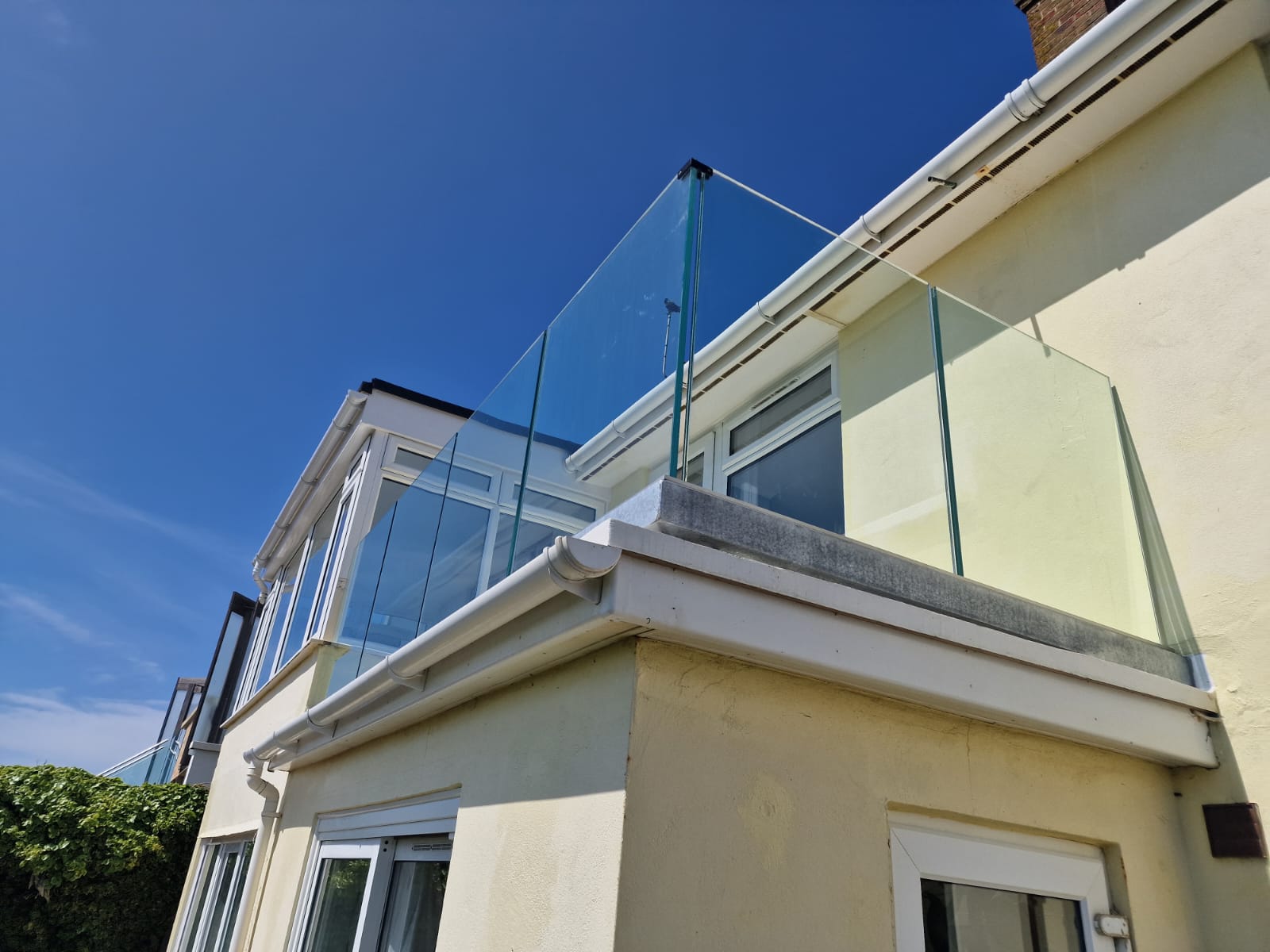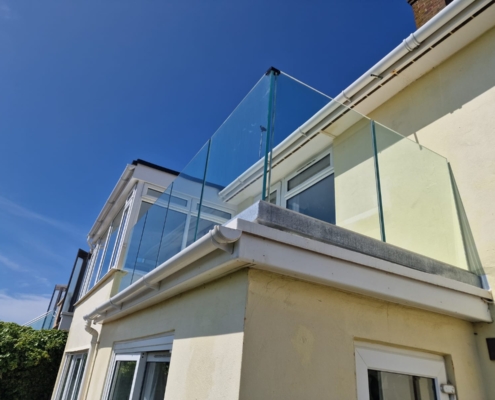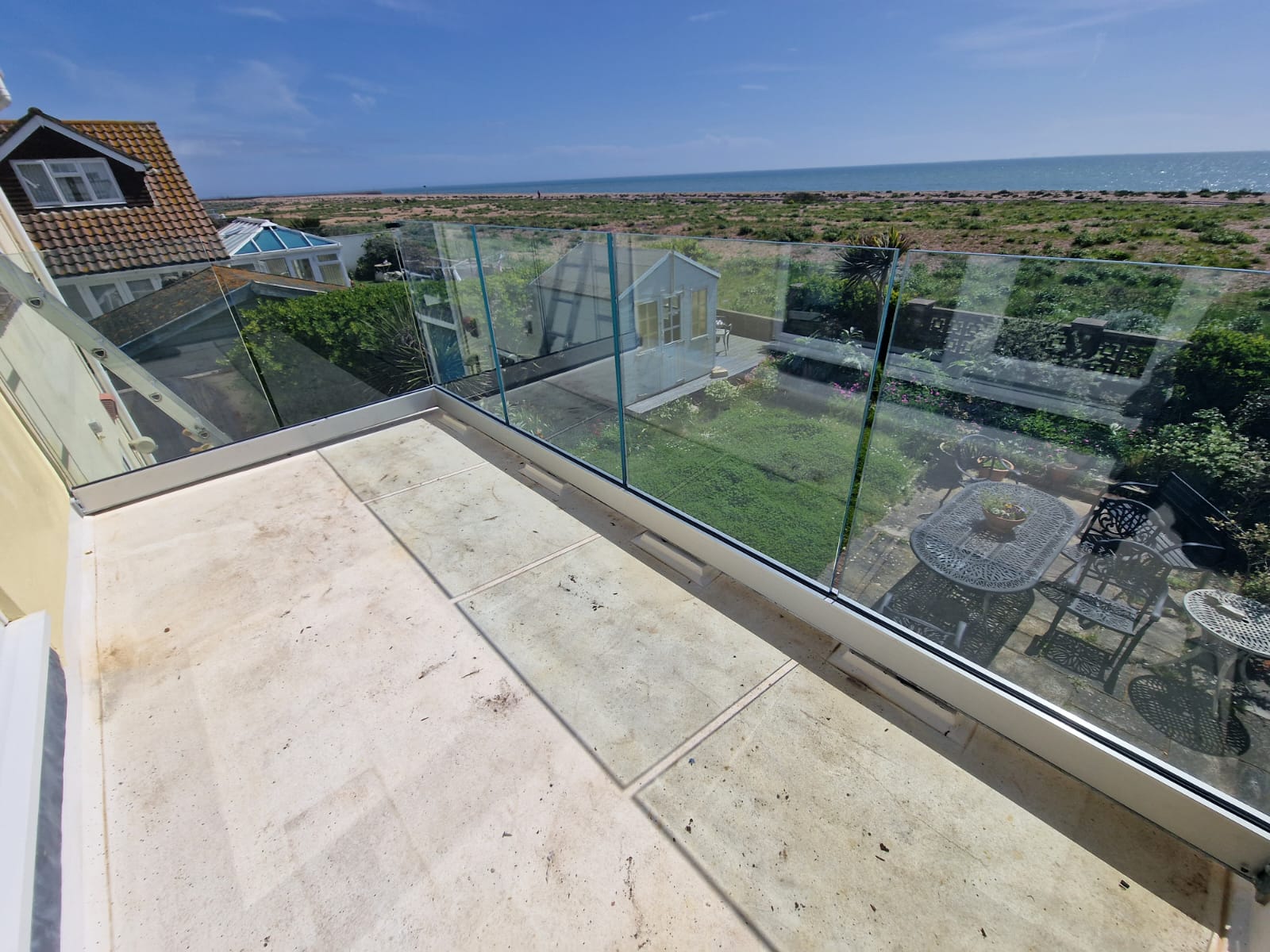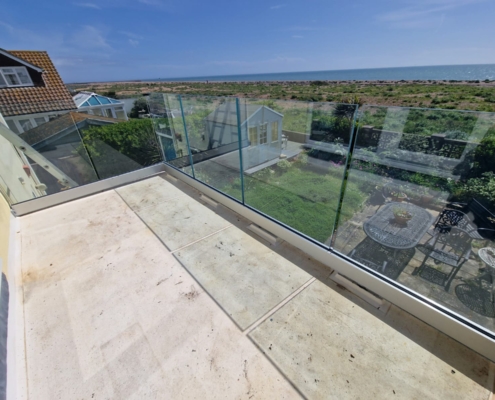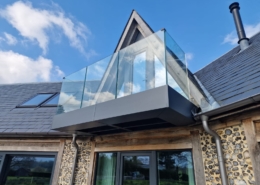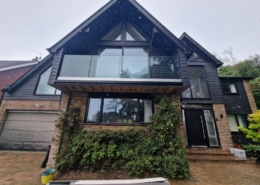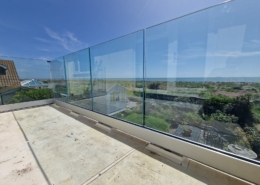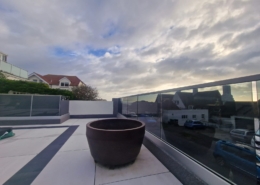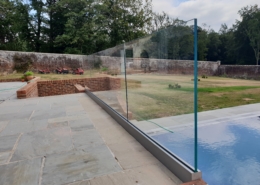The frameless glass balustrade project
Here is an installation of one of our frameless glass balustrade projects for a client in Shoreham. The client needs a glass balustrade solution that works with pre-installed metalwork on the flat roof of the balcony. The client had a spectacular view of the Shoreham coastline. The frameless glass balustrade solution had to be unobtrusive, but more importantly, it needed to be safe for the windspeeds of the area.
Project images
Project details: Shoreham Frameless Glass Balustrade
Glass Balustrade project specification:
- Project location: Shoreham, East Sussex
- Installed area: Flat roof, Balcony Area
- Fixing method: Track based balustrade, installed to internal connections
- Balustrade type: Fully frameless
- Glass type: 21.5mm toughened and laminated standard clear glass
- Handrail: no handrail
What height does my glass balustrade need to be?
As per the requirements set out in part K building regulations, all domestic balustrades need to be 1100mm high (1.1M) externally and 900mm (0.9m) high internally. For staircases, this is 900mm above pitch line of the stairs. Download a copy of the latest part K building regulations.
Caution that small ledges and parapets can be deemed a step and the balustrade height may be taken from the height of the “step”
Do I need a handrail on my frameless glass balustrade?
We generally always recommended using a handrail on balconies but if the correct glass is used, a handrail can be optional. Generally, the glass must be of a suitable thickness and be toughened and laminated.
Do I need privacy glass for my balustrade project?
In certain situations, privacy glass may be required in order to obtain planning permission for your balcony. We advise that you talk to your local authority to find out if you will require privacy glass. Often, privacy glass may be required where your balcony has a view into your neighbor’s space.
What gaps are your allowed in a glass balustrade?
The maximum glass gaps allowed is anything less than 100mm. This is a Part K building regulations requirement. Check Part K building regulations for the latest balustrade requirements.
What is 316 grade stainless steel?
316 grade is the second-most common form of stainless steel. It has almost the same physical and mechanical properties as 304 stainless steel, and contains a similar material make-up. The key difference is that 316 stainless steel incorporates about 2 to 3 percent molybdenum. The addition increases corrosion resistance, particularly against chlorides and other industrial solvents.
316 stainless steel is commonly used in many industrial applications involving processing chemicals, as well as high-saline environments such as coastal regions and outdoor areas where de-icing salts are common. Due to its non-reactive qualities, 316 stainless steel is also used in the manufacture of medical surgical instruments.
Are you thinking about having a frameless glass balustrade system installed?
Our Shoreham-based client engaged us early so we were able to advise and assist.
There are always important considerations to be made before choosing your balustrade system. These are some of the most common considerations
- What will the balustrade fix to?
This is a very important consideration as the balustrade can only be a strong as what there is to fix. In the above project, the client was advised by their builders during the construction stage to have structural members inserted within the roof to support the frameless balustrade track
- How will you weather the glass balustrade system?
This again is a very important consideration – we always recommend engaging a professional roofer for the weather in all balustrades systems. This way a warranty can be provided or preserved with the current flat roof system




